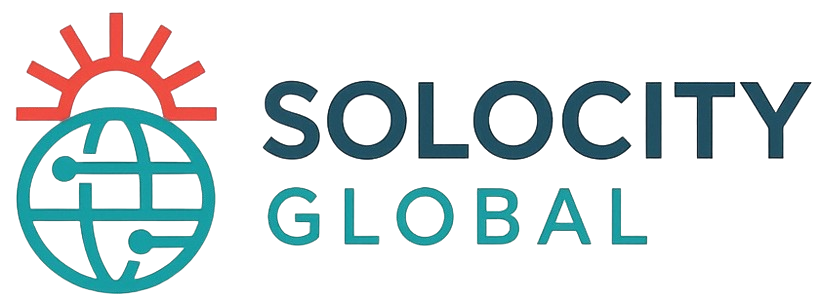You’re facing a $180 billion solar market where 73% of brands struggle to differentiate their products through generic OEM solutions. Sourcing the right ODM partner requires strategic evaluation of their R&D capabilities, manufacturing infrastructure, and customization flexibility. Most companies underestimate the technical complexity involved in solar panel design modifications, leading to costly delays and performance issues. The difference between a successful brand launch and market failure often hinges on one critical factor that determines your ODM partnership outcome.
Understanding ODM Vs OEM Manufacturing Models in Solar Industry

When you’re entering the solar panel market, understanding the distinction between ODM and OEM manufacturing models becomes crucial for your sourcing strategy. ODM manufacturers design and produce customized solar panels based on your specific requirements, including precise wattage specifications, dimensions, and material choices. This model enables extensive collaboration with your solar panel supplier to develop tailored solutions that enhance performance and brand differentiation. Conversely, OEM focuses on supplying standard finished products with minimal customization options and longer lead times. ODM partnerships reduce your investment risk while accelerating product development cycles, allowing faster market entry. You’ll streamline offerings and adapt quickly to renewable energy market demands through ODM’s flexible manufacturing approach.
Key Criteria for Evaluating Solar Panel ODM Partners
Selecting the right ODM partner requires a systematic evaluation framework that examines five key performance indicators across technical and operational dimensions.
First, verify industry experience spanning 10+ years with documented collaborations featuring recognizable solar brands. Second, analyze design capabilities through case studies showcasing custom solutions across diverse applications and performance specifications. Third, audit manufacturing infrastructure for advanced technologies and international quality compliance that supports scalable production demands.
Fourth, assess R&D team composition, targeting dedicated engineering groups with 7-9 years solar technology expertise driving innovation capabilities. Finally, evaluate after-sales support structures including 1-2 year warranty offerings, maintenance protocols, and installation guidance that align with your brand’s customer service standards.
Leading ODM manufacturers typically focus on producing Tier-1 solar panels that meet the highest industry standards for reliability and performance. This systematic approach guarantees you’ll identify ODM partners capable of delivering technical excellence while supporting long-term market positioning.
Technical Specifications and Customization Capabilities Assessment
After establishing your ODM partner selection criteria, you’ll need to conduct a granular assessment of technical specifications that directly impact market competitiveness and brand differentiation.
Start by evaluating core panel dimensions, wattage outputs, and efficiency ratings against your target market requirements. Assess both monocrystalline and polycrystalline cell technologies for ideal performance across diverse environmental conditions. Consider how your chosen mounting system compatibility will influence panel specifications and ensure seamless integration with various installation configurations.
| Component | Customization Options |
|---|---|
| Frame Design | Material selection, color matching, brand-specific profiles |
| Backsheet Technology | Enhanced UV resistance, aesthetic customization, longevity optimization |
| Performance Parameters | Low-light efficiency, temperature coefficients, power tolerance |
Collaborate directly with R&D teams to specify performance enhancements that’ll differentiate your product portfolio. Focus on customizable backsheet solutions that combine visual appeal with superior environmental resistance, while ensuring frame designs reflect brand identity without compromising structural integrity.
Quality Control Standards and Certification Requirements

When sourcing solar panel ODM designs, you’ll need to verify that manufacturers comply with essential certification standards including ISO 9001 for quality management and IEC 61215 for photovoltaic module performance. Your selected ODM partner must demonstrate adherence to recognized testing protocols from organizations like UL and TüV Rheinland, which validate safety and efficiency benchmarks critical for market acceptance. These certification requirements aren’t optional—they’re market prerequisites that directly impact your product’s commercial viability and regulatory compliance across different geographic regions. The IEC renewable energy standards framework provides comprehensive technical specifications that ensure your solar panels meet international performance, safety, and durability requirements across all major markets.
Essential Certification Standards
Since solar panel performance and safety directly impact your project’s long-term viability, you’ll need to verify that your ODM partner maintains strict adherence to internationally recognized certification standards. Your partner must demonstrate IEC 61215 compliance for terrestrial photovoltaic modules and IEC 61730 for safety requirements. ISO 9001 quality management certification guarantees consistent product delivery that meets customer specifications.
For North American markets, you’ll require UL standards compliance to assure safety and reliability, while RoHS certification confirms hazardous substance restrictions are met. CE marking is essential for European market access, demonstrating compliance with EU health, safety, and environmental standards. These certifications aren’t optional—they’re market prerequisites that determine your product’s commercial viability and regulatory acceptance across target regions.
Testing Protocol Requirements
While certification standards establish baseline requirements, exhaustive testing protocols form the operational backbone of quality assurance in solar panel ODM partnerships. You’ll need extensive performance evaluations covering temperature coefficients, light-induced degradation, and salt mist corrosion resistance to verify environmental resilience. Your ODM partner must conduct rigorous testing under various environmental conditions, ensuring efficiency and durability metrics align with IEC 61215 and IEC 61730 standards.
Establish detailed validation processes during sampling phases, requiring performance checks that confirm compliance with your specifications and industry benchmarks. Don’t overlook ongoing testing feedback loops—they’re essential for continuous improvement. Your partner’s testing capabilities directly impact product reliability and market competitiveness, so prioritize ODMs with proven track records in extensive testing methodologies and documentation systems.
Prototype Development and Testing Phase Management

You’ll need to establish robust prototype design validation protocols that confirm your solar panel specifications meet both performance targets and client requirements before committing to full-scale production. Your testing protocol standards must incorporate industry-standard metrics for efficiency, durability, and environmental resistance while maintaining clear documentation throughout the validation process. Implementing systematic testing procedures with your ODM partner reduces manufacturing risks and guarantees that prototypes consistently deliver the technical performance data necessary for market entry. As the IEA’s latest review indicates, renewable capacity additions continue to accelerate globally, making rigorous prototype validation essential for capturing market share in this rapidly expanding sector.
Prototype Design Validation
Before your solar panel design moves to mass production, prototype validation serves as the critical checkpoint where theoretical specifications meet real-world performance demands. You’ll need thorough performance evaluations testing efficiency metrics, durability thresholds, and environmental resistance parameters against your established criteria. Focus testing feedback on optimizing low-light performance and temperature response characteristics to maximize market viability across diverse operational conditions.
Your R&D collaboration guarantees rigorous structural integrity assessments and functionality verification before production commitment. During validation, you’re measuring actual output against projected specifications, identifying performance gaps, and implementing design refinements. This phase prevents costly production errors and validates your prototype’s commercial readiness.
Once validation confirms compliance with all performance benchmarks, you can confidently shift to mass production under established quality control protocols, assuring consistent reliability throughout manufacturing.
Testing Protocol Standards
Establishing standardized testing protocols transforms your prototype validation from ad-hoc evaluation into systematic performance verification that meets industry benchmarks and regulatory compliance requirements. You’ll need protocols covering temperature coefficient evaluations, low-light performance assessments, and environmental resistance testing against salt mist corrosion. Your R&D team should implement rigorous testing sequences that validate specific criteria before mass production authorization.
Customized performance checks guarantee your solar panels meet exact specifications while maintaining market competitiveness. Document feedback loops from test results to enable continuous design improvement cycles. This systematic approach assures your final products consistently exceed customer expectations while reducing costly post-production modifications. Proper protocol management accelerates time-to-market while establishing quality benchmarks that differentiate your ODM partnerships in competitive solar markets.
Manufacturing Capacity and Production Scalability Analysis

Three critical factors determine whether a solar panel ODM manufacturer can scale effectively with your project demands: baseline production capacity, automation infrastructure, and supply chain flexibility. Manufacturing capacity typically ranges from several megawatts to hundreds of megawatts annually, providing substantial scalability for demand fluctuations. You’ll need automated production lines that enhance efficiency and speed, enabling manufacturers to accommodate large ODM orders while maintaining quality standards.
Conduct thorough supply chain logistics analysis, as this directly impacts production scalability and delivery timeline adherence. Quick production volume ramp-up capabilities allow manufacturers to respond promptly to market shifts and your specific requirements, maintaining competitive advantages. Ascertain your ODM partner collaborates with R&D teams, fostering innovation in design and materials while maximizing production capacity for your brand’s specifications. Working with solar export specialists who understand global manufacturing networks can significantly streamline your ODM sourcing process and ensure production capabilities align with international market demands.
Pricing Structure and Cost Optimization Strategies
How can you effectively navigate ODM solar panel pricing while maximizing cost efficiency for your brand? ODM pricing structures encompass material costs, production expenses, and customization fees based on cell type and wattage specifications. You’ll achieve significant savings through bulk ordering, as larger volumes reduce per-unit manufacturing costs. While bespoke packaging and branding incur additional fees, strategic design integration enhances brand recognition and justifies the investment.
Partner with ODM manufacturers offering transparent pricing breakdowns to identify cost-saving opportunities and improve budget management. Implement efficient project management and production scheduling to minimize delays, reducing storage costs while enhancing cash flow efficiency. Focus on volume commitments, specification standardization, and clear timeline adherence to optimize your total cost of ownership and maximize profitability in competitive solar markets.
Supply Chain Management and Delivery Timeline Planning
Cost optimization extends beyond initial pricing negotiations into extensive supply chain orchestration that directly impacts your project’s profitability and market responsiveness. You’ll need to establish robust supplier coordination protocols to secure lead times ranging from weeks to months, depending on customization complexity and order volumes. Your logistics strategy must integrate transportation modes and warehousing solutions that balance delivery speed against cost efficiency. Implement real-time communication channels with manufacturers to monitor inventory levels and production schedules, preventing costly delays. Deploy data analytics for demand forecasting to align ODM design procurement with market trends, minimizing overstock risks while ensuring adequate supply. This systematic approach transforms supply chain management from reactive coordination into proactive competitive advantage.
Long-term Partnership Benefits and After-Sales Support

Partnership longevity with your ODM supplier creates measurable returns that compound beyond initial cost savings, delivering sustained competitive advantages through dedicated technical support infrastructure and quality assurance protocols. You’ll access shared manufacturing expertise that guarantees consistent product quality across production runs, while established processes minimize defect rates and optimize performance specifications. Your ODM partner’s enhanced after-sales support directly impacts customer satisfaction metrics and retention rates, strengthening your market position. Standard warranties spanning 1-2 years provide reliability assurance that reduces post-sale support costs. Through continuous collaboration, you’ll receive market intelligence on emerging trends and innovations, enabling proactive product development strategies. These partnerships deliver tailored energy solutions that meet your specific requirements, maximizing system efficiency and performance benchmarks. Advanced ODM suppliers increasingly integrate hybrid inverter technology into their solar panel designs, enabling seamless energy management between solar generation, battery storage, and grid connectivity for enhanced system flexibility.
Conclusion
You’ll maximize your solar panel ODM sourcing success by implementing systematic partner evaluation protocols that prioritize technical capabilities, certification compliance, and scalability metrics. Data shows brands achieving 15-30% faster time-to-market when they establish clear customization parameters and robust quality control frameworks upfront. You’re positioning yourself for competitive advantage by securing ODM partners with proven R&D infrastructure and extensive after-sales support structures that’ll drive long-term market differentiation.


